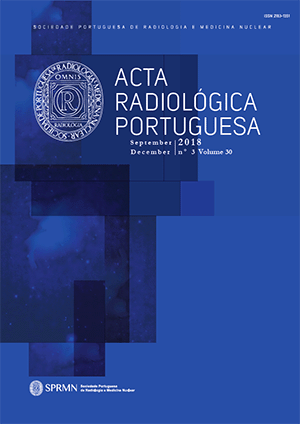Lesão Incomum da Base do Crânio: Hemangiopericitoma da Fossa Craniana Média
DOI:
https://doi.org/10.25748/arp.14813Resumen
Meningioma is the most common intracranial tumor affecting the skull base and the diagnosis is usually straightforward on imaging studies. However, other lesions can appear similar on imaging studies.
A 60 year-old-man presented with non-specific neurological symptoms, including memory loss and behavioral changes. CT and MR imaging disclosed an extra-axial, dural-based lesion in the middle cranial fossa. The lesion was remarkable for its hypervascular nature with strong and early contrast enhancement, large peripheral flow voids and vasogenic edema of the adjacent brain parenchyma.
Although the most common dural-based lesion of the CNS is the meningioma, radiologists should be aware of other differential diagnoses, particularly when facing atypical imaging features. These comprise metastases, lymphoma and leukemia, histiocytic lesions, sarcoidosis and hemangiopericytoma. These lesions have a significant impact on patient´s management. Based on imaging findings we were able to suggest the diagnosis of hemangiopericytoma and the patient was managed accordingly.
Descargas
Publicado
Número
Sección
Licencia
CC BY-NC 4.0


